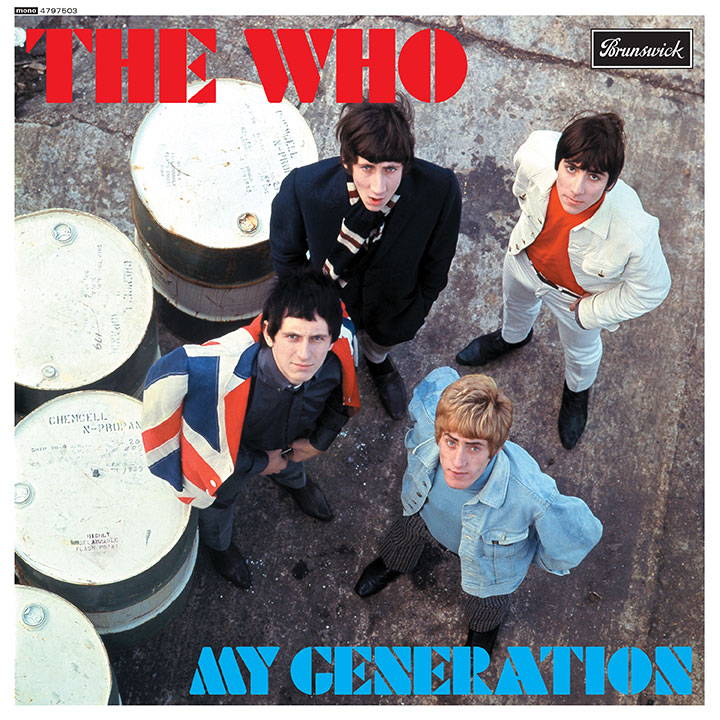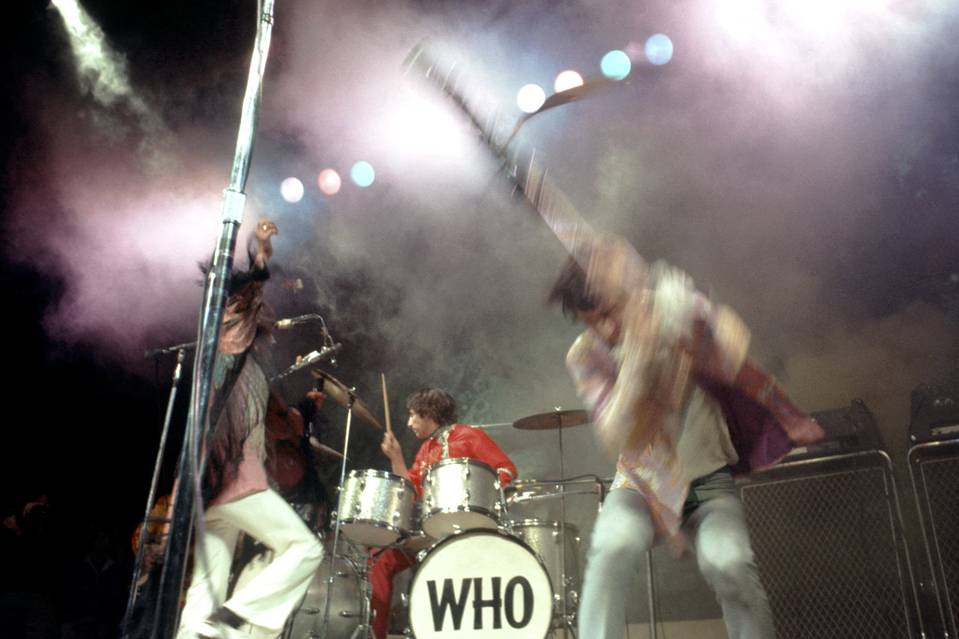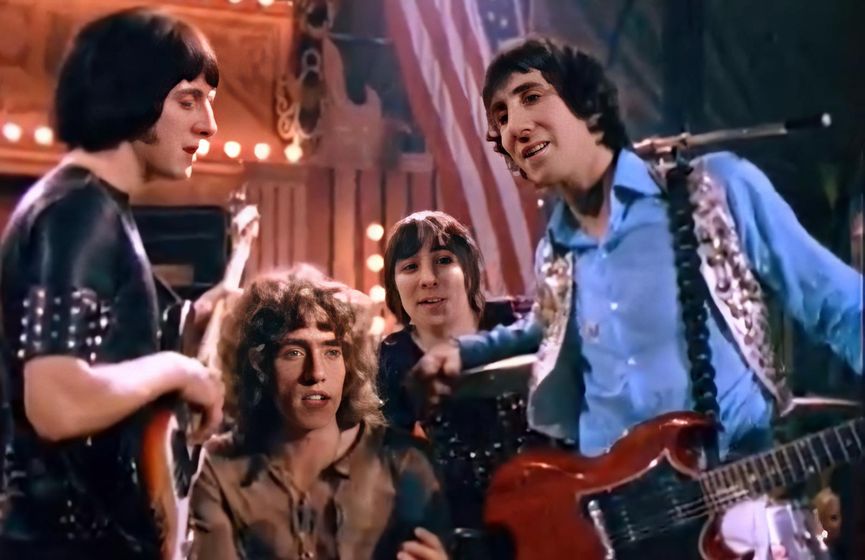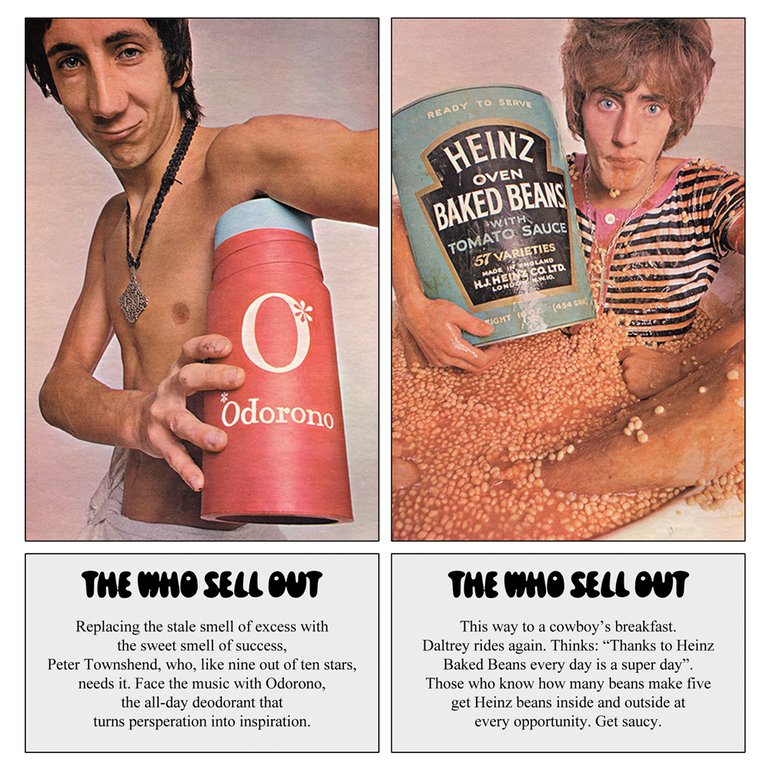Podcast: Play in new window | Download | Embed
Revisiting the formative years of what many consider one of the greatest Rock and Roll bands in history, The Who, where they went from being part of the Swinging Sixties Mod youth culture to just before the release of their fourth album, Tommy, by which time they honed their skills as a live act that no one could beat. #swinginglondon #1960s #thewho #rockandroll #mods
In an industry where attitude can mean everything, The Who took this phrase to never before seen heights.
Starting off as the Detours and The High Numbers, the band struggled to find their initial sound. Frontman and lead vocalist Roger Daltrey was originally a guitarist, bassist John Entwistle was also a horn player and guitarist and principle songwriter Pete Townsend was the rhythm guitarist. Keith Moon, their drummer, wasn’t the first man behind the kit in the group, but was copped from another band that played surf music.

Their first manager, Pete Meaden, also wrote their first single, “Zoot Suit”, that appealed to the swinging sixties British youth culture movement called The Mods, which drew heavy inspiration from American R&B acts, particularly that of Motown Records. The band also fought amongst themselves constantly, with Daltrey eventually giving up his role as the leader of the group.
They started to have hits as the Who with a sound that fed off of this intense inter-band tension, creating what Townsend called Power Pop. They also declared themselves the living embodiment of Pop Art as a music group, and became infamous for not just destroying their equipment on stage, but notoriety as a group that ran into trouble with law enforcement while on tour and destroying hotel rooms.

Townsend also became the band’s defacto and primary songwriter, and some of the themes in his work dealt with real world issues of young people, right down to amphetamine use, masturbation, relationship challenges, self and gender identity, all subjects their contemporaries, which included The Kinks, The Rolling Stones and of course The Beatles, weren’t singing about.
In an era where bands were recording two, sometimes three albums a year, The Who only released three albums worth of material, and a number of non-LP singles, from 1964 to 1968. Management problems, a lawsuit by their first producer and the inability to chart high placing singles in the U.S. added to their grief, where just before the release of the album that would change the group’s career and fortunes, Tommy in 1969, the band weren’t just completely broke, but horribly in debt.

However, during the 18 months from the release of The Who Sell Out to Tommy, they did release a handful of new singles, and most importantly, became a powerhouse live act and concert draw, one almost driven completely by word of mouth.
Among their firsts were the use of specialized equipment, including Rotosound strings that gave Entwistle’s bass sound the incredible deep end the band would become famous for, the use of feedback and distortion, stacks of Marshall Amps, Townsend’s lead guitar riffs based on rhythm techniques, auto-destructive live performances and Moon’s use not of high hats and tom-toms but of rolling cymbals and a double bass drum, and of course, Daltrey’s roar of a voice that made even The Who’s ballads more hefty than most other Pop or Rock singles. Even their rough and ready group harmony lead vocals were derived from a pub-rock sing along sound that was unheard of outside of their native England.

Yes, many times, it almost sounded like they were trying to outdo each other, giving their live sound a force that was unheard of in any music genre and set the stage for Heavy Rock, Metal and Punk.
These are the formative years of a band that became the world’s greatest live Rock and Roll act, and one about to make the leap into one of the best-selling album artists in history, simply by being so stubborn they would not give up.
First Part
- Band Interview/My Generation (live), 1967, The Smothers Brothers Comedy Hour television program
- Anyway, Anyhow, Anywhere, 1965, single A-side
- Zoot Suit, 1964, single A-side (As The High Numbers)
- A Legal Matter, 1965, My Generation (U.K.) and The Who Sings My Generation (U.S.)
- I Can’t Explain, 1964, single A-side
- Leaving Here (live), 1965, eventual release on BBC Sessions
- Doctor Doctor, 1967, B-side of “Picture of Lily”
- Summertime Blues (live), 1967, The Monterrey Pop Festival film
- Substitute (U.S. Version), 1966, single only A-side with alternate lyrics
Second Part
- Pictures of Lily, 1967, U.K. single only A-side and U.S. album Magic Bus: The Who on Tour
- Disguises, 1966, U.K. only EP Ready Steady Who
- Daddy Rolling Stone, 1965, U.K. single B-side of “Anyway, Anyhow, Anywhere”
- Tattoo, 1967, The Who Sell Out
- Magic Bus, 1968, U.K. single only A-side and U.S. album Magic Bus: The Who on Tour
- Radio Jingle/Rotosound Strings/I Can See For Miles, 1967, The Who Sell Out
Finale
- A Quick One While He’s Away (live), 1968, The Rolling Stones Rock and Roll Circus film
Love to you all.
Ben “Daddy Ben Bear” Brown Jr.
Host, Show Producer, Webmaster, Audio Engineer, Researcher, Videographer and Writer
Instagram: brownjr.ben
Twitter: @BenBrownJunior
LinkedIn: benbrownjunior
Design Site: aospdx.com
“Copyright Disclaimer Under Section 107 of the Copyright Act 1976, allowance is made for ‘fair use’ for purposes such as criticism, comment, news reporting, teaching, scholarship, and research. Fair use is a use permitted by copyright statute that might otherwise be infringing. Non-profit, educational or personal use tips the balance in favor of fair use.”
